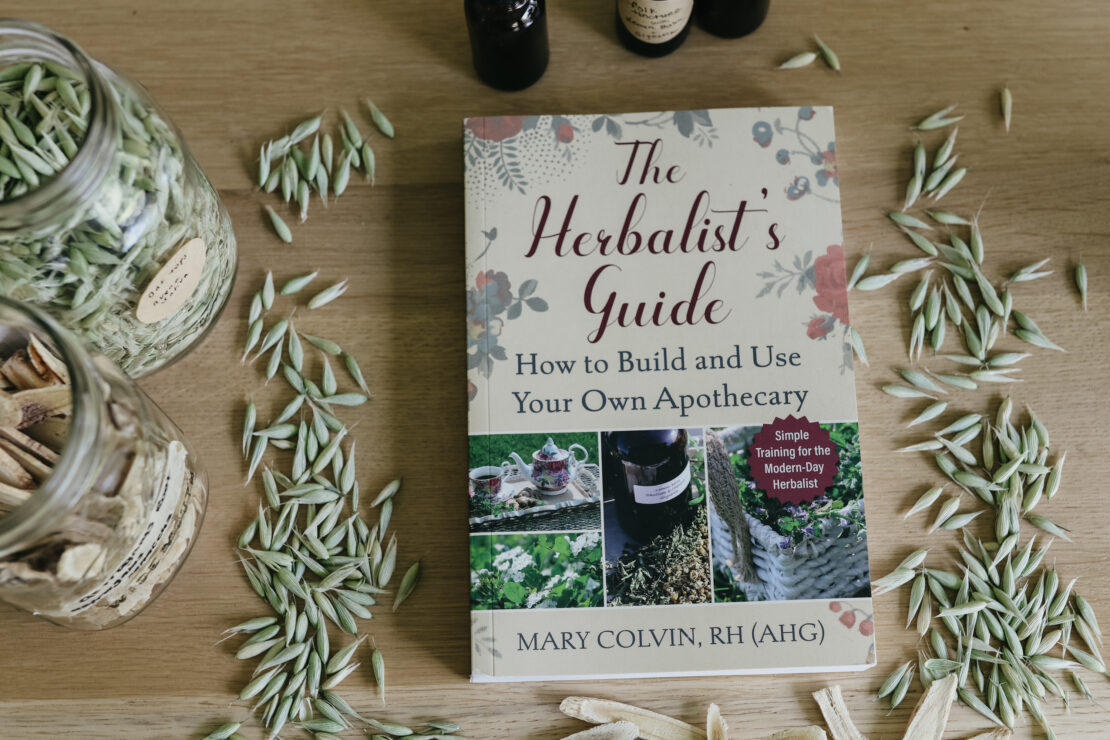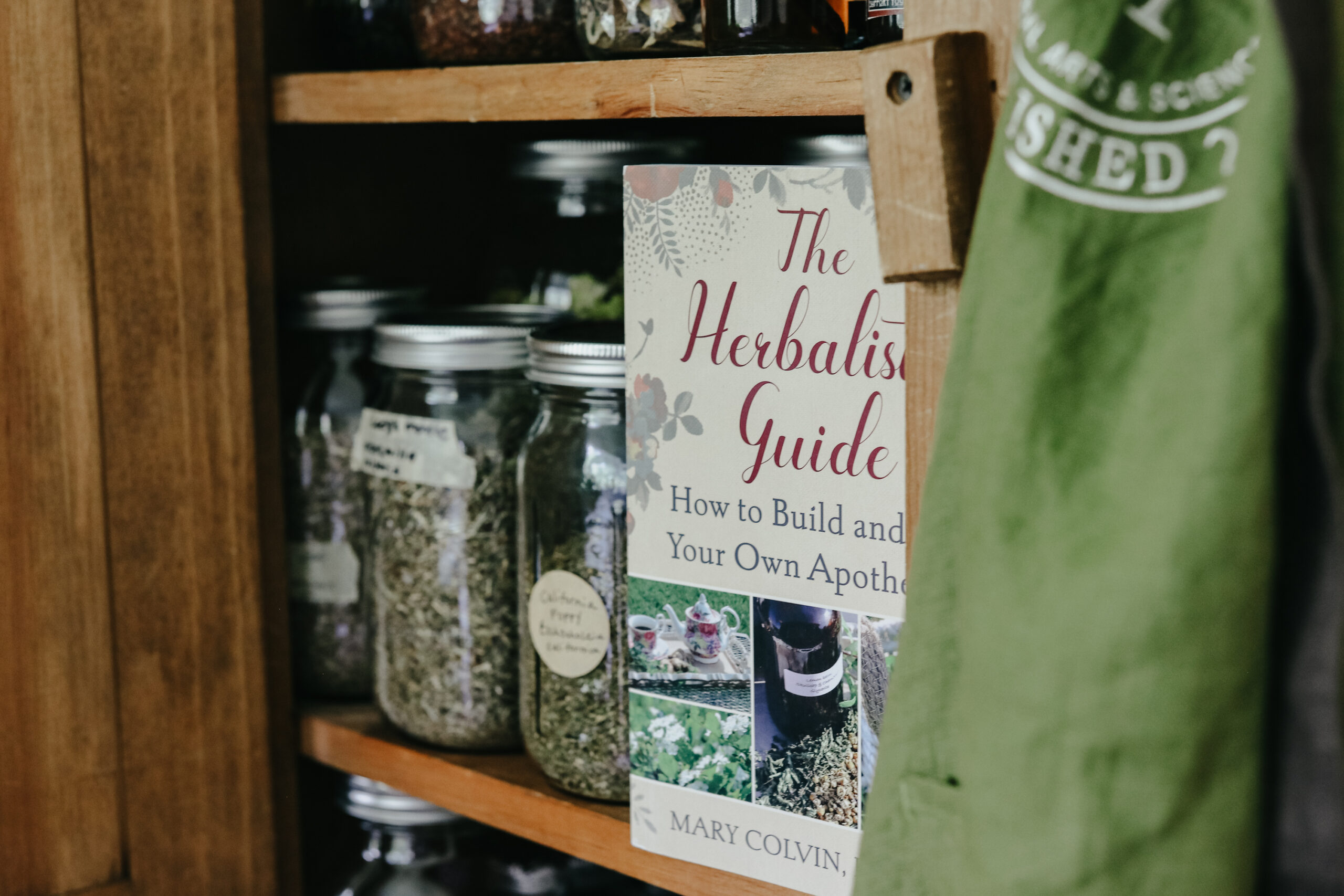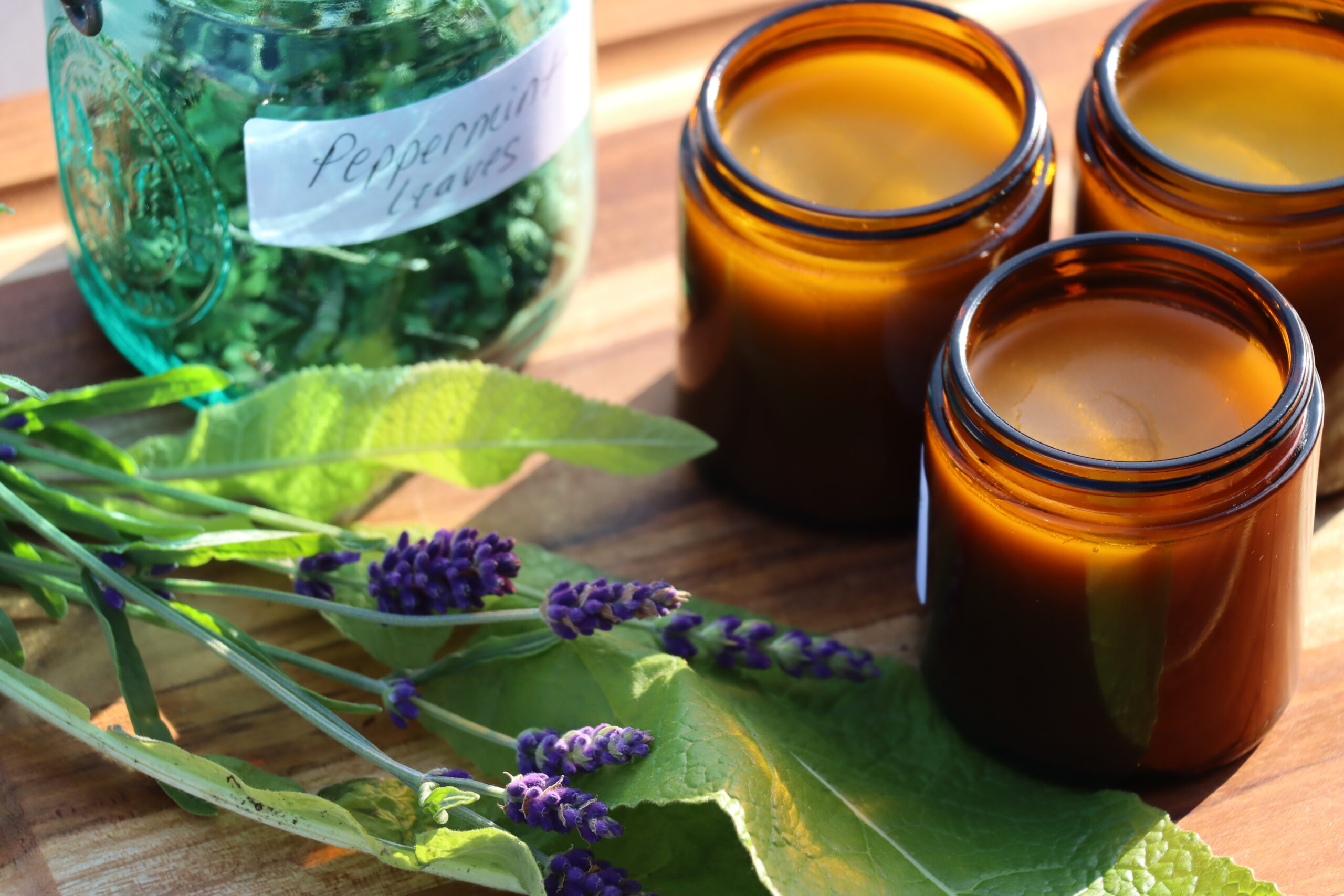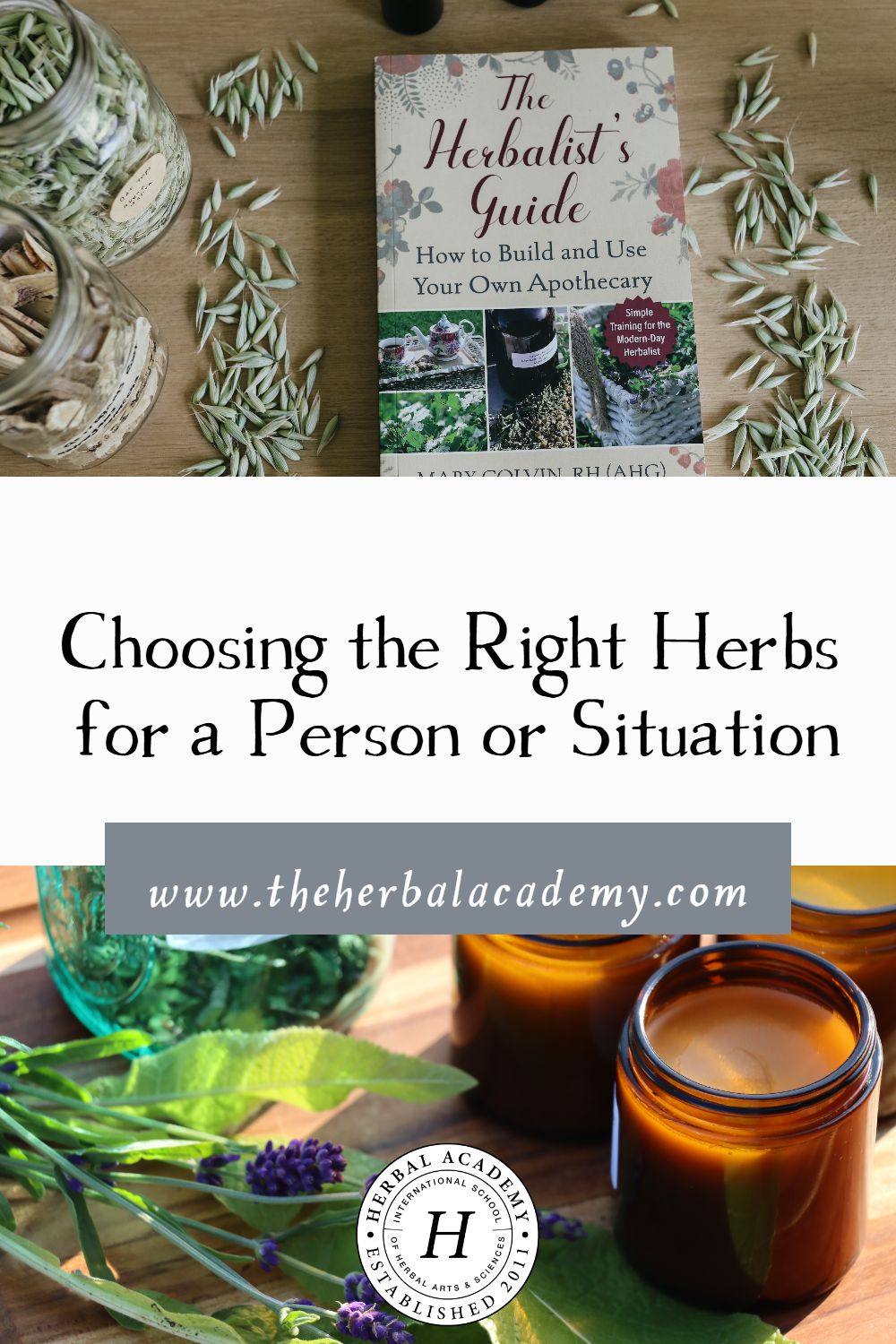
Choosing the Right Herbs for a Person or Situation
In her new book, The Herbalist’s Guide: How to Build and Use Your Own Apothecary, Mary Colvin, RH(AHG), offers a detailed exploration of many herbal preparations, including many recipes, monographs, and clinical insights. Mary shares her passion for inspiring herbalists of all stages who dream of establishing a thoughtfully curated apothecary. Exploring the nuances of how individual constitutions match with specific plants, Mary digs deep into both the art and science of herbalism.
In the excerpt from Chapter 22 below, Mary offers a framework for choosing just the right herbs and preparations for a particular person or situation. A well-stocked apothecary is the foundation of any herbalist’s path, whether it’s just for family use or catering to a busy clinic. Throughout her work, Mary pulls back the veil on her clinical herbalism practice to reveal what makes up a comprehensive apothecary, how to make its various preparations, and who might benefit from them.

The following is excerpted from The Herbalist’s Guide: How to Build and Use Your Own Apothecary by Mary Colvin, RH(AHG). Used with permission from Mary Colvin and Skyhorse Publishing. Text and photos © 2024 Mary Colvin.
CHAPTER TWENTY-TWO
Choosing the Right Herb
Learning to pick the right herb for the right person takes some practice, and it includes a process of combining the knowledge of the properties of the herb, the energetics of the herb, the energetics of the individual, and the needs of the individual. This might sound like a lot to remember or think about, but you will get better the more you practice and the more experience and knowledge you have with each herb.
Your journals will be a good reference for you in the future when you research information about an herb. You can refer back to your journals for your own personal experiences with them along with how you used each and at what doses. Priceless information for you!
Mary’s Advice
In Chapter Eighteen, I gave you steps on how to combine properties and energetics using the knowledge I gave you prior to that chapter. The exercise given in that chapter asked you to choose five people experiencing different symptoms around you. You were to determine the supportive properties needed for each individual, and then determine the energetics of the five individuals along with the plant energetics needed to balance them. You will need to retrieve that exercise to complete the exercise below.
I had asked you to take the time to research each herb individually before you completed each exercise. This could include contraindications and interactions, any scientific studies done on the herb, history and folklore of each herb, its growing conditions and identification, possibly other plants that could be mistaken for the herb, and what other experiences herbalists have documented about each herb. This is important additional information you need in order to solidify your knowledge of each herb and be able to choose the correct herb in any given situation.
The information provided about each herb included some of my own experiences. After research and your own personal experiences with each, you might decide on other uses for the herb, decide on different energetics for each herb, and decide on different herbal preparations to make with each herb. You might have different philosophies regarding how you want to practice herbalism that don’t reflect mine, and that is perfectly fine. Ask a number of herbalists which herb they choose for an individual or what preparation they prefer, and you will get a number of different herbs and choices of preparations. Are they wrong? No, they aren’t. Every herbalist has their favorite herbs to work with, and how they like to use them. If the herb matches the individual’s need and energetics and helps them, that is all that matters. There are so many different herbs than the ones I have written about in this book, and it is my hope you will continue studying and researching new herbs as you grow as an herbalist.
Now that you know the steps, have researched and learned about each of the herbs, and had some experience working with them, let’s move on to choosing the right herb. The following exercise at the end of this chapter sets up a thoughtful process for you to follow in choosing the right herb for an individual. You might find that you have more than one herb that will suffice for the situation and the person needing it. Let’s take a look at what you can do in this scenario.

All herbs have multiple actions in varying degrees, and it helps to know which herb has stronger properties, or which organs the herb has an affinity for. Think back to historical uses with each herb and their possible indications (a symptom, type of person, or special situations for the use of a particular herb gathered from personal experience or study) that can further help you decide on the correct herb out of the possible selections. Here are some additional steps that I may take when deciding on the right herb out of multiple choices in my pantry for my clients.
- Think about the strength of each herb for the properties needed. Is one stronger than the other in action?
- Look at which organ the herbs have an affinity for. Compare it to the needs of the individual.
- As an example: You need an antispasmodic herb, and each of your choices have the correct energetics needed. If one of the herb’s affinity organs is the lungs and the other herb’s affinity organ is the digestive system, the choice will be easy to make if your client has coughing spasms.
- Look at the historical and traditional uses of an herb to help you decide on the best choice.
- As an example: Red clover was traditionally used in whooping cough. This might be the right herb for the coughing spasms in your client rather than catnip (Nepeta cataria), which is also an antispasmodic but was not necessarily used traditionally in that manner.
- Look at the indications for each herb that you would find in your research, or you have noticed in your own experiences.
- As an example: Passionflower (Passiflora incarnata) is indicated for the individual that cannot quiet their mind before sleeping and cannot fall asleep compared to blue vervain (Verbena hastata), which is indicated in the individual characterized by Matthew Wood in The Earthwise Herbal as “strong above and weak below.” Does the individual have trouble shutting down their thoughts, or are they the type that makes a list and has a low libido? This could help in the choice.
- Will you be using this herb for a longer period of time? If so, which one is a tonic or trophorestorative herb and can be safely used for longer durations?
- Does one herb interact with any medications the individual is on or contraindicate with any health conditions they might have? Safety first!
These are just some other possible steps that you can think through in order to know you have chosen the best selection for the individual. You might still come up with more than one herb to choose from out of your pantry after following these steps, and in that case, either would be fine to use.

SEE THE VIDEO IN THE HERBARIUM!
Interested in learning more about Mary’s favorite apothecary picks? Members of The Herbarium can access the full book excerpt (including a foundational recipe) and join Mary in a video going further into choosing herbs for individual constitutions! You’ll find The Herbalist’s Guide excerpt and video with Mary in The Herbarium.
Interested but not yet a member of The Herbarium? Get access today with a 3 day trial for only $3!
The Herbarium is our ever-expanding, illuminating virtual collection of over 200 (and counting!) searchable monographs, unique intensive short courses on focused topics, and numerous articles, videos, ebooks, podcasts, and helpful downloadable resources. The Herbarium is crafted to help you learn and grow in your herbal journey!
Learn more and sign up for The Herbarium here.
Get a copy of Mary’s book, The Herbalist’s Guide: How to Build and Use Your Own Apothecary, on Amazon.








